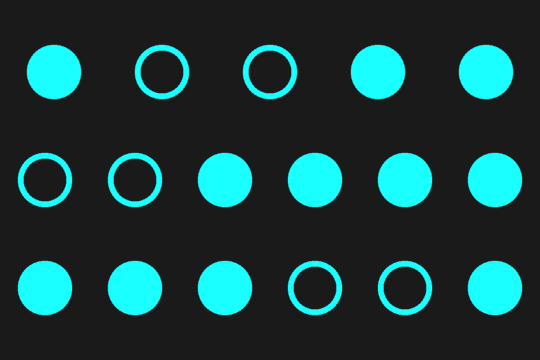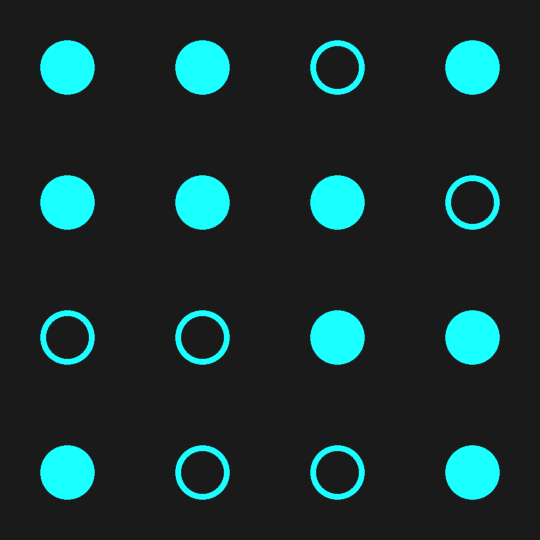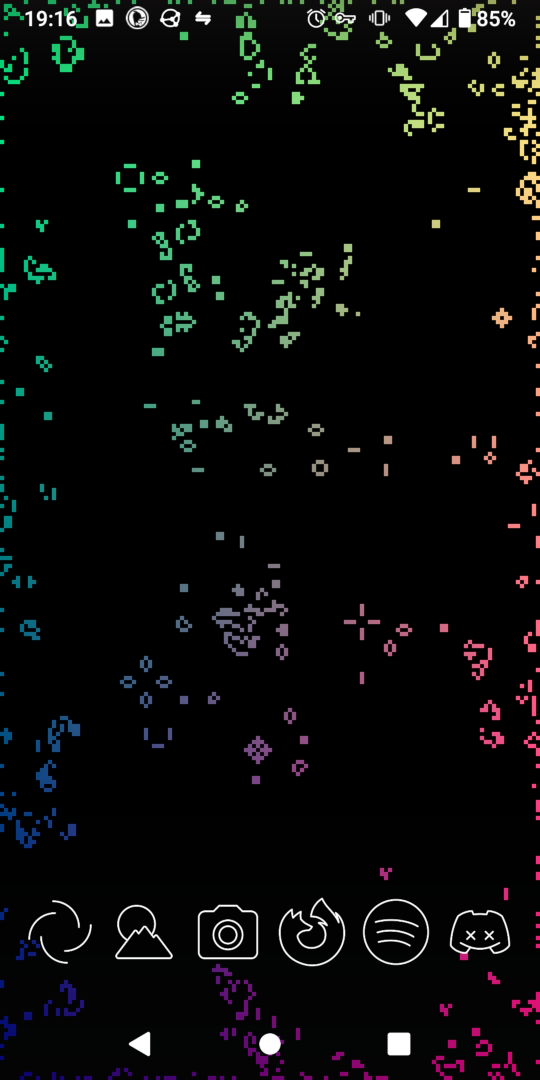| demo | ||
| binary_clock.glsl | ||
| binary_clock_square.glsl | ||
| interactive_game_of_life.glsl | ||
| README.md | ||
android-shaders
GLSL shaders made in/for the Shader Editor app on F-Droid (source).
binary_clock.glsl
Displays hours, minutes and seconds in binary as rows of filled circles. The example below is showing the time 19:15:57
binary_clock_square.glsl
Divides the day into 65536 beats, roughly 1.3 seconds each, and displays the time in a 4x4 grid as binary. The least significant bit is to the bottom right, increasing left first then up.
The example below is showing the time 1101 1110 0011 1001 or DE39in hexadecimal (one digit per row of dots), which is equivalent to about 20:50:00.
Formula for converting a time to beats: (hours * 3600 + minutes * 60 + seconds) / 86400 * 65536
And to convert back to hours, minutes and seconds:
seconds = int((beats * 86400 / 65536) % 60)minutes = int((beats * 86400 / 65536) / 60 % 60)hours = int((beats * 86400 / 65536) / 3600)
interactive_game_of_life.glsl
A rainbow-coloured simulation of Conway's Game of Life. The edges of the screen are randomised so that the pattern never stabilises. Pressing on the screen will turn on cells in a small radius.


